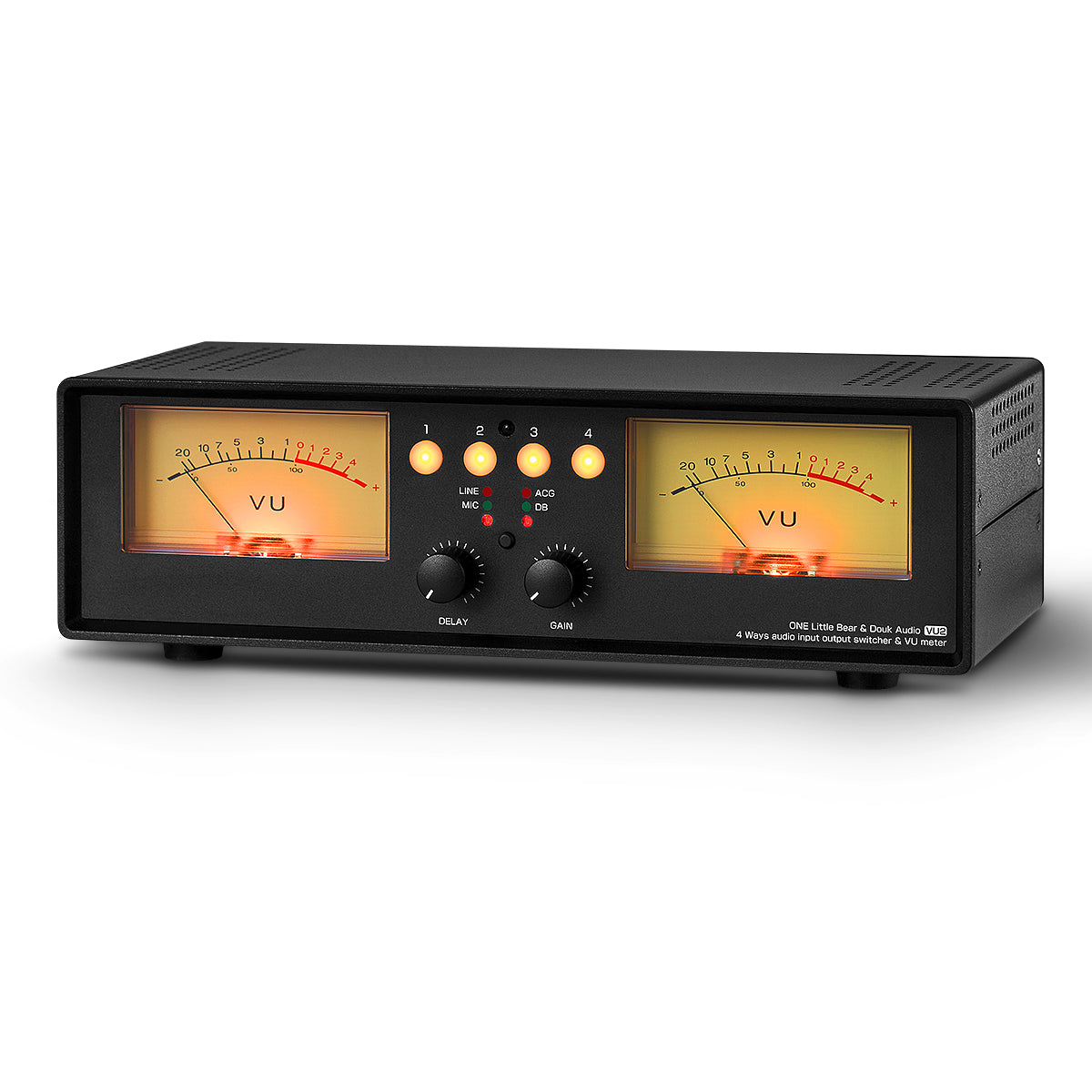A and B are in parallel, so you could leave your main speakers wired as usual on the A terminals and use short dedicated wires from the B output to the vu-meter.
That way the audio performances should be unchanged (the vu-meter is a negligible load for a speaker amp).
You just lose the switching function of the Douk device.
And you could even measure the effect of this load as disconnecting it using the amp's B switch would be very practical for an A (speakers) / B (speakers + vu-meter) comparison.
And for quiet dark listening sessions it would be easy to disable the whole vu-meter parallel chain.
Makes me think that, if the consumption of the electronics is low enough, one might even power the whole thing with the 12V trigger output of one amp. For example with an AVR you can select per input if the 12v trigger should be powered or not. My Denon can supply 12v / 150mA, 1.8W. Could be just enough with the 12v to 5v down-converter and the vu drivers + leds. It would be safe though to disable the internal relays to limit power.
That way the audio performances should be unchanged (the vu-meter is a negligible load for a speaker amp).
You just lose the switching function of the Douk device.
And you could even measure the effect of this load as disconnecting it using the amp's B switch would be very practical for an A (speakers) / B (speakers + vu-meter) comparison.
And for quiet dark listening sessions it would be easy to disable the whole vu-meter parallel chain.
Makes me think that, if the consumption of the electronics is low enough, one might even power the whole thing with the 12V trigger output of one amp. For example with an AVR you can select per input if the 12v trigger should be powered or not. My Denon can supply 12v / 150mA, 1.8W. Could be just enough with the 12v to 5v down-converter and the vu drivers + leds. It would be safe though to disable the internal relays to limit power.
Last edited:

